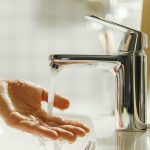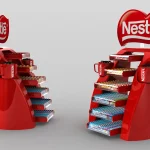Ppr fittings are a key component of any piping system. They help to join pipes, direct water flow, and adapt water outlets. In addition, they also reduce the need for threading and cementing, which greatly simplifies and speeds up piping installations and improves their function. They are becoming more and more popular in modern society, occupying a large share of the pipeline market. Whether you are building or renovating, you will need PPR pipes and fittings to complete your project. But before you buy them, it’s important to understand how they work. This article will give you a general overview of ppr pipe fittings, including their history, manufacturing process, and advantages.
PPR stands for polypropylene random copolymer, and it is a type of plastic that is mainly used in plumbing systems. It is made of high-quality granules that are melted and extruded into pipes, and then they are socketed or welded together to create a system. PPR is a durable, lightweight material that can withstand a wide range of temperatures and pressures. It is easy to install, and its joints are leak-proof and safe. It also shows good resistance against mineral deposits and chemicals, making it a highly suitable pipe for hot water systems.
To make ppr fittings, the raw materials are selected for their purity and consistency, and they are then melted at a high temperature. After that, they are extruded into a variety of shapes, such as elbows and tees. They are then cooled and sized to achieve the correct dimensions and prevent warping. During this step, each fitting is subject to rigorous quality control. Once they are finished, they are packaged for distribution to customers.
There are several types of ppr pipe fittings, each with its own unique application. For example, an elbow can help to turn the direction of water flow, while a tee can connect two pipes of different diameters. Other common ppr fittings include couplings, end caps, and adapters. You can choose the one that best suits your project, but it’s important to follow the manufacturer’s specifications for optimum performance.
The most common type of ppr pipe fitting is the elbow. This can be used to direct the flow of water in a particular direction, either upward or downward. The rounded surface can reduce the impact of the water flow, which will protect the pipe from damage. In addition, an elbow has a lower thermal conductivity than straight pipes. This will help to conserve energy and keep the water temperature stable.
In addition, the ppr fitting end cap is a useful accessory that can be used to seal off any exposed ends of the piping. This can be especially helpful when you are working in an area that will not be accessible later. Using a ppr fitting end cap will ensure that the pipe is completely protected from any water or debris that could get into it. This can help to extend the lifespan of your piping system and protect your home or business from expensive repairs and replacements.









